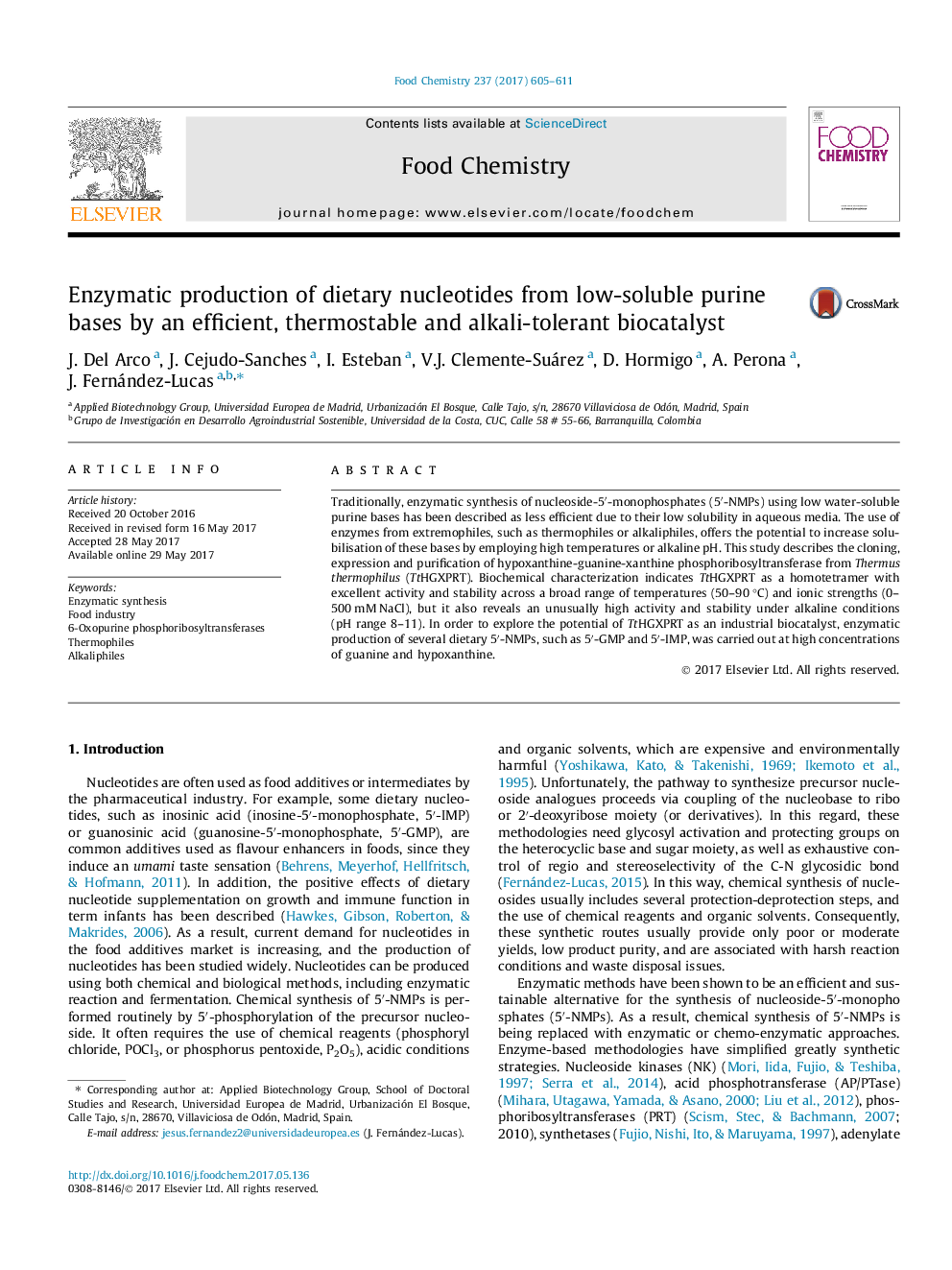| Article ID | Journal | Published Year | Pages | File Type |
|---|---|---|---|---|
| 5132757 | Food Chemistry | 2017 | 7 Pages |
â¢Biochemical characterization of HGXPRT from Thermus thermophilus HB8 was performed.â¢TtHGXPRT displays high activity and stability under alkaline conditions (pH 8-11).â¢Enzymatic production of 5â²-GMP and 5â²-IMP was performed by TtHGXPRT.
Traditionally, enzymatic synthesis of nucleoside-5â²-monophosphates (5â²-NMPs) using low water-soluble purine bases has been described as less efficient due to their low solubility in aqueous media. The use of enzymes from extremophiles, such as thermophiles or alkaliphiles, offers the potential to increase solubilisation of these bases by employing high temperatures or alkaline pH. This study describes the cloning, expression and purification of hypoxanthine-guanine-xanthine phosphoribosyltransferase from Thermus thermophilus (TtHGXPRT). Biochemical characterization indicates TtHGXPRT as a homotetramer with excellent activity and stability across a broad range of temperatures (50-90 °C) and ionic strengths (0-500 mM NaCl), but it also reveals an unusually high activity and stability under alkaline conditions (pH range 8-11). In order to explore the potential of TtHGXPRT as an industrial biocatalyst, enzymatic production of several dietary 5â²-NMPs, such as 5â²-GMP and 5â²-IMP, was carried out at high concentrations of guanine and hypoxanthine.
